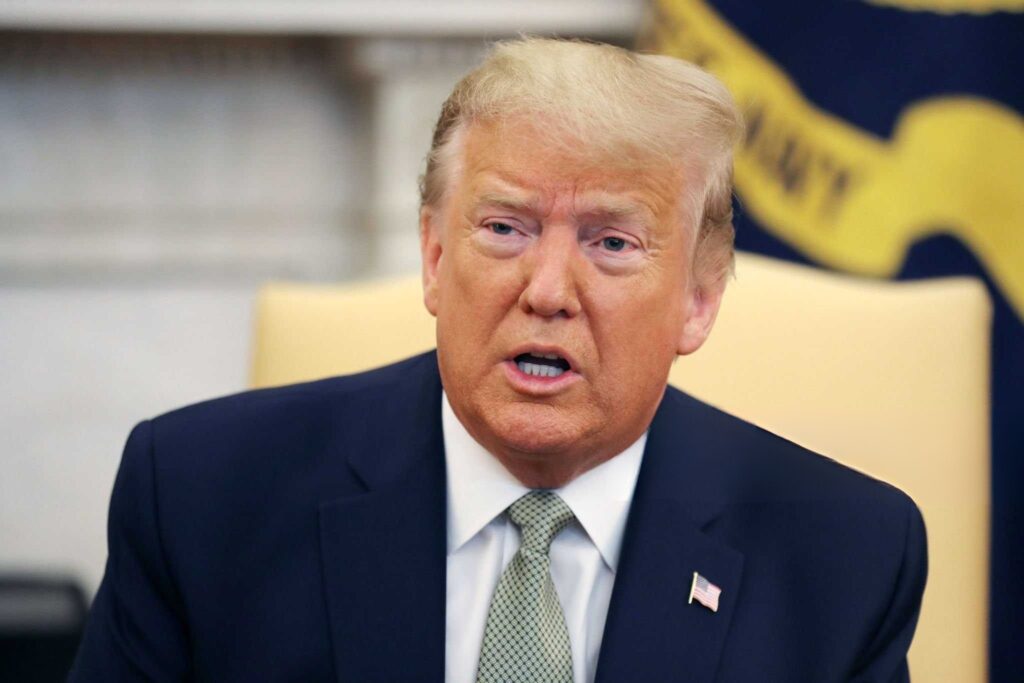In a major trade move, former President Donald Trump has paused tariffs for almost every country — but not for China. The announcement came during a speech at the National Republican Congressional Committee (NRCC) dinner in Washington on April 8, 2025. Trump said the 90-day pause would give the U.S. time to make better trade deals with many nations. But he made it clear that China is not included in this break.
Soon after the speech, Trump posted on Truth Social. He shared that a new 125% tariff on goods from China would begin right away. He said China had shown “a lack of respect for global markets” and needed to face stronger action. This sharp increase is part of Trump’s wider “Liberation Day” policy. The plan is meant to push for fairer trade with countries around the world.
Most Countries Get a Break, But Not Beijing
The White House later confirmed that the tariff pause would cover nearly all nations, except China. Trump claimed that over 75 countries had already reached out to renegotiate trade deals. He said this proved the strength of the new policy.
Many experts see this move as a way to pressure foreign governments into making better deals with the U.S. Trump’s strategy is based on using strong trade rules as leverage. He believes that higher tariffs can lead to stronger, fairer trade terms for American workers and businesses.
Markets Jump After Announcement
Global markets quickly responded to Trump’s announcement. Stock prices rose sharply as investors welcomed the pause. The Dow Jones surged by 2,000 points within minutes of the news.
The White House explained that a temporary 10% tariff would now apply to nearly all countries. Officials described it as a “universal tariff” meant to act as a bridge during ongoing talks. This short-term measure will help the U.S. move from one-size-fits-all trade policies to deals made one country at a time.
New rules went into effect just after midnight. They include:
-
125% tariffs on Chinese goods
-
104% on earlier Chinese imports
-
20% on products from the European Union
-
24% on Japanese goods
-
25% on South Korean exports
These changes affect many major trade partners. While the U.S. is open to talks, for now, the tariffs stand.
A Mix of Hope and Concern
The White House has said that these tariff levels are not final. Officials stressed that talks with other countries could last for months. Many business leaders and lawmakers have asked for more details.
Some Republicans and corporate leaders have raised alarms. They worry the new rules could hurt American companies and raise prices for everyday items. In response, Trump’s team said the policy is about defending American jobs. They said unfair foreign trade has hurt U.S. industries for too long.
A White House aide said, “We are not shutting the door on anyone. But we are also not backing down from protecting our workers and economy.”
China Responds with Tough Words
China has reacted strongly to the new tariffs. A spokesperson from China’s Ministry of Commerce called the U.S. actions “hostile and unfair.” They warned that China could hit back with tariffs of their own. In the past, trade fights between the U.S. and China have led to price hikes and slower economic growth.
Some economists are worried that another trade war could begin. In 2018 and 2019, a similar trade battle hurt farmers, raised costs for goods, and caused uncertainty in global markets.
The Bigger Picture
Trump’s “Liberation Day” tariffs are part of his larger goal to bring manufacturing back to the U.S. He has often said that America needs to “stop relying on China” and build more things at home.
In recent months, Trump has talked a lot about rebuilding the U.S. supply chain. His team says these tariffs will encourage companies to move their factories back to the U.S. or to “friendly nations.”
Still, critics argue that such moves could lead to long-term problems. They say it could drive up prices, hurt exports, and cause tension with allies.
For now, the 90-day pause gives most countries time to come to the table. Trump and his team are ready to strike new deals. But they are also clear that if talks fail, high tariffs will stay in place.
Many are watching to see how China reacts next. The White House has not ruled out more penalties if Beijing does not respond with reforms.
As this story develops, both supporters and critics agree on one thing: The next few months will be key in shaping America’s trade future.


